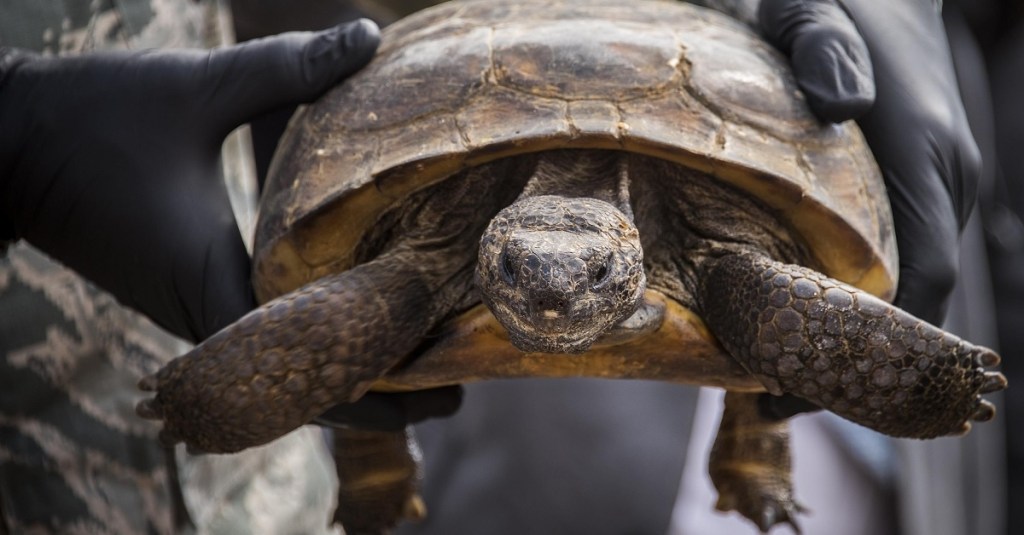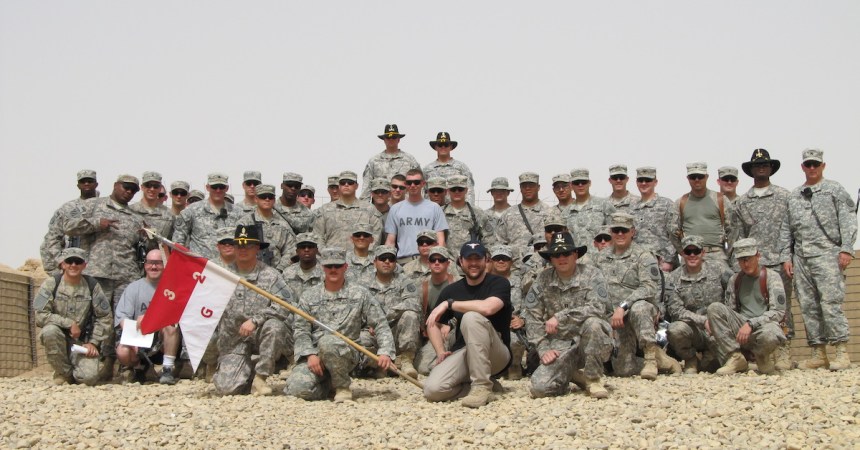Troops lose their mind when they have to go to either Fort Irwin or Twentynine Palms. They’re both in insanely hot climates, offer very little to do outside of training, and the living conditions are far worse than what POGs are accustomed to. Despite all that, everything comes to a standstill when a single desert tortoise shows up.
The same thing happens when a red-cockaded woodpecker appears at Fort Benning, Indiana bats at Fort Knox, and piping plovers at RTC Great Lakes. These are all objectively unpleasant military installations that have endemic species of animals that put a stop to training just by showing up.
This causes a headache for many troops in leadership positions and is the butt of many jokes among the junior enlisted. It stops becoming funny, however, when leadership tells their troops that they can’t leave behind even a single breadcrumb that could attract the predators of said animals.

(Fort Drum Garrison Public Affairs)
This is all because the animals listed above are endangered and their safest habitats are on military installations.
Back in 1973, the Endangered Species Act was passed, stating that the government will do its part to protect its endangered animals and prosecute anyone who bring them harm. While it’s easy to issue out fines to anyone who accidentally kills a desert tortoise, it’s even easier (and you know, better) to take preventive measures and keep them alive.
The military does its part in a large way — far larger than most organizations dedicated to saving these species. In 2011 alone, the U.S. military spent $7.6 million on keeping desert tortoises safe — a grand total of over $100.9 million since 1993. That money has gone a long way in keeping these at-risk animals alive for many generations.

(U.S. Army photo by Staff Sgt. Michael Williams)
“But these are just some dumb turtles!” someone in the back of the formation may yell. That class clown might be right — these tortoises could be dumb, indeed — but it doesn’t matter. If you allow one invasive fish, for example, to fade away because of the enormous amount of money required to protect it, then there’s a justification allowing any species to die out, putting the animal kingdom right back where it was in 1972.
Potential dumbness aside, every animal must be treated with the same delicate gloves or we risk losing them all.

(U.S. Army)
The next “good idea fairy” solution is to just move them away from military installations. It should be fairly obvious why taking slow-moving prey away from a habitat where they’re cared for and are kept safe from predators and tossing them into a new, unfamiliar landscape devoid of such protections is a bad idea. If you’re having trouble seeing why that’s a problem, we’ve got an example for you:
They tried this once with the desert tortoises at Fort Irwin in 2008. The logic behind it was that the tortoises would be far safer somewhere where they wouldn’t be accidentally blown to bits by troops in training. The relocation effort cost $50 million and, within a year, about 30% of all the tortoises (who have an average life-span of over 100 years) died before the program was scrapped.
There were many factors that contributed to the dying off of thousands of tortoises. First, being put in an unknown environment meant that they had no idea where the food or water was. This was made worse when packs of predators discovered an enormous buffet of food that couldn’t run or hide.

(U.S. Air Force photo by Heide Couch)
There are over 400 species of endangered animals on military grounds and, even with human intervention, these are the best habitats for them. Each of the species that are protected by the U.S. Armed Forces are all carefully monitored to make sure that no harm comes to them.
It’s not uncommon for troops to incorporate their nesting grounds into their training. While preparing for a mission, their nests are treated in the same way as schools or hospitals in the battlefield. Troops just avoid them at all costs.
The good news is that this ongoing effort to protect them has yielded some very visible results. While there are outliers in the desert tortoise populations (California droughts are partially to blame), animal populations at other installations have all boomed in recent years. Simply adjusting fire from one part of the range to another at Joint Base Lewis-McChord has helped the streaked horned lark population almost quadruple in less than a decade.
Protecting these species requires a little effort and a creates bit of inconvenience, but it’s been proven that the military installations these animals call home are truly the best places for these species to thrive.










